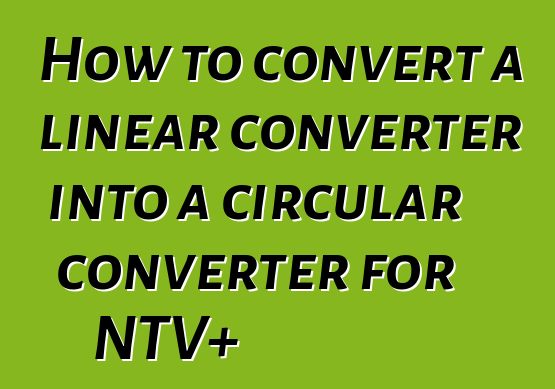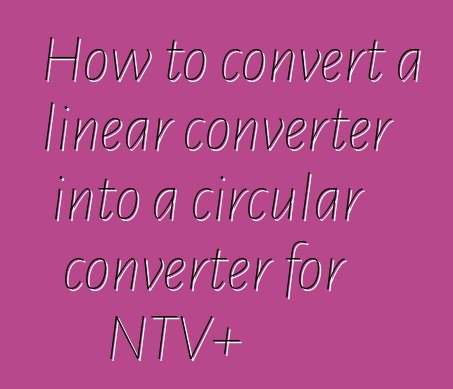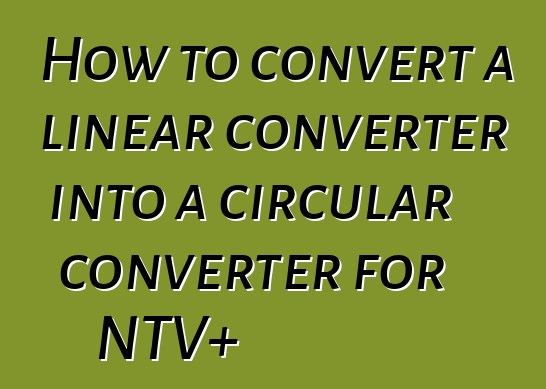





If you have a dish tuned, for example, to HotBird or somewhere else, and you want to receive Eutelsat Sesat W4 36E, then there is one problem - 36E transmits a signal in circular polarization, for this you need to spend money on a new converter or ... a little -a little time, for free!
To do this, you need to remove the protective cap on the converter, if it is a cold season, then it is better to remove the converter, bring it into the room and lower the cap into warm water so that it heats up and is elastic. Otherwise, when picking off the cap, it will crack in the cold, like mine (I was too lazy to take it off). But if this happens, do not worry, then it will be possible to pull a plastic transparent bag over it and seal it with tape.
Linear and circular converters are arranged in the same way. In the depths of the waveguide, small antennas, 2-3 mm in size, horizontal and vertical, stick out. The circular converter differs only in that at the beginning of the waveguide, in front of these antennas, there is a plastic plate that "straightens" the twisted wave.
If such a plate made of ordinary plastic is placed in a linear converter, then it will receive both a linear signal and a circular one.
The shape of the dielectric doesn't matter, as long as it's flat and at a 45 degree angle. You'll need a piece of plastic ~2mm thick, I used a black CD box liner. It is easy to cut with scissors, but since it is thinner, you need to cut two identical plates and put them together without gluing. The dimensions depend on the converter. I cut out this shape (with a wedge for easy fixing).
The taper will allow you to securely fasten it. The width is determined by the method of insertion, if it does not fit, then you need to cut it. Then close the cap, do not forget about the rubber seal so that water does not leak.
All super-universal converter is ready. There is no need to change the converter type in the tuner settings! Leave the Ku-Line.
Linear and circular converters are arranged in the same way. In the depths of the waveguide, small antennas, 2-3 mm in size, horizontal and vertical, stick out. The circular converter differs only in that at the beginning of the waveguide, in front of these antennas, there is a plastic plate that "straightens" the twisted wave.
If such a plate made of ordinary plastic is placed in a linear converter, then it will receive both a linear signal and a circular one.
The shape of the dielectric doesn't matter, as long as it's flat and at a 45 degree angle. You'll need a piece of plastic ~2mm thick, I used a black CD box liner. It is easy to cut with scissors, but since it is thinner, you need to cut two identical plates and put them together without gluing. The dimensions depend on the converter. I cut out this shape (with a wedge for easy fixing).
The taper will allow you to securely fasten it. The width is determined by the method of insertion, if it does not fit, then you need to cut it. Then close the cap, do not forget about the rubber seal so that water does not leak.
All super-universal converter is ready. There is no need to change the converter type in the tuner settings! Leave the Ku-Line.





